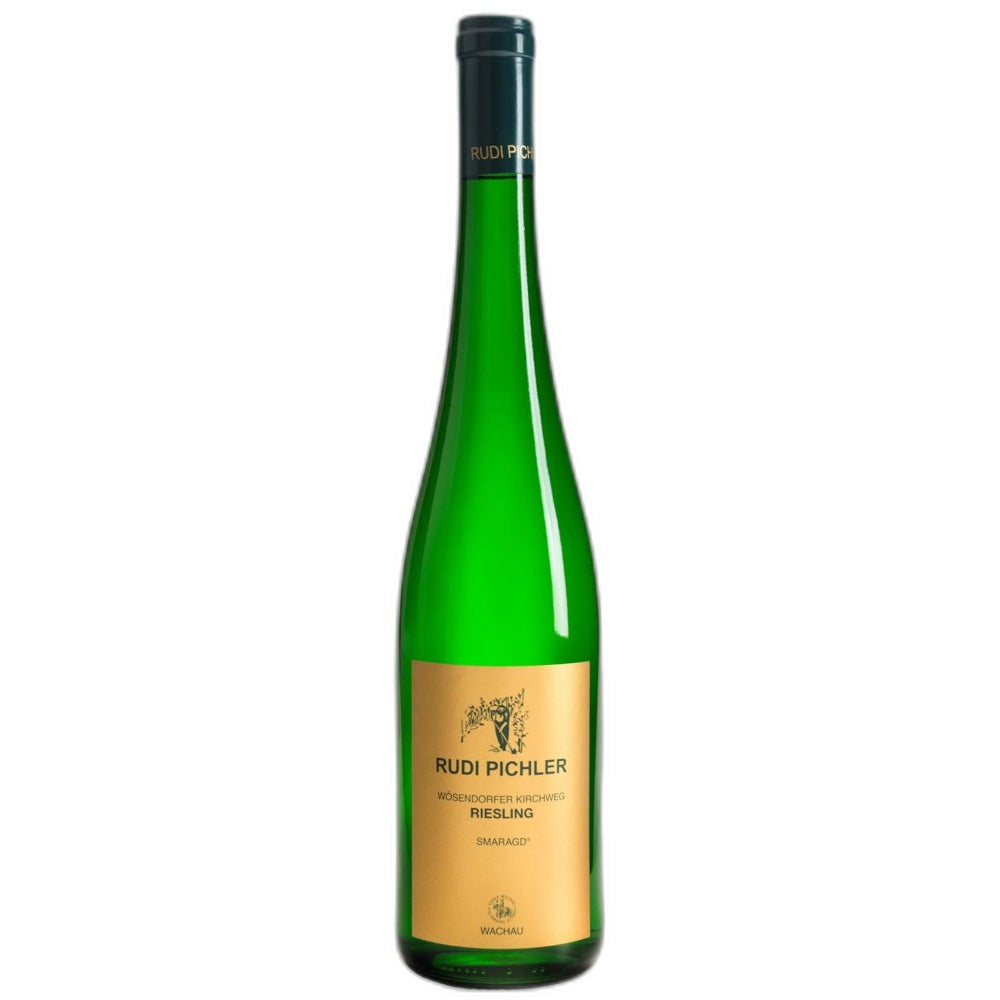
Rudi Pichler Riesling Kirchweg Smaragd 2023
Rudi Pichler Riesling Kirchweg Smaragd 2023
The 2023 Riesling Kirchweg Smaragd grows in a mix of loess and eroded paragneiss deposits closer to the Danube. A touch of mandarin plays on the nose, with some white summer blossom alongside a certain creaminess. The palate has that same smoothness but is aligned to a stony verve. Focus brings zestiness, while the mid-palate has lovely pith, slender but concentrated, with scented, subtle citrus on the long finish. The 2023 is a Riesling with tons of charm. (Bone-dry) - By Anne Krebiehl MW on May 2024
The Vineyard: Before construction of the village church, residents of Wösendorf were obliged to walk along the Kirchweg, the "church path", to nearby Sankt Michael. Ried Kirchweg lies just north of the path, where the vineyard borders on the Hochrain, and was known early-on for producing particularly good results with Riesling on the higher-situated Wösendorf side. The reason for this is a small tributary stream, which during heavy rainfalls has blanketed the Danube sediments with sand and coarsely grained streambed stones, creating a gently sloping alluvial fan. Next to the westerly Achleithen, the Kirchweg soils display the least concentration of carbonates in their subsoil. The lower-lying side closer to St. Michael is composed of Danube sediments and reserved for the Grüner Veltliner.
Anne Krebiehl MW (Vinous) on May 2024:
“Exciting” is how Rudi Pichler described 2023. The estate sustained some hail damage in late August in the lowest-lying and highest Riesling parcels; hence, there is no Riesling Federspiel this year. Pichler quickly adds that those further east, in Kamptal, were hit much worse. He said that several theories did the rounds regarding hail-damaged bunches: some insisted that since affected grapes had dried out, they would not make a difference during skin contact, “but we decided to sort them all out completely and painstakingly.” This was only possible by recruiting many more pickers from friends and family and then dealing with all the extra admin this entails in Austria. “We managed it all, and that was a feat,” Pichler says. “It was the right decision.” Harvest started on 3 October and was done by mid-November – and the wines are as linear and taut as ever, even if the fruit flavors are in a riper spectrum.





